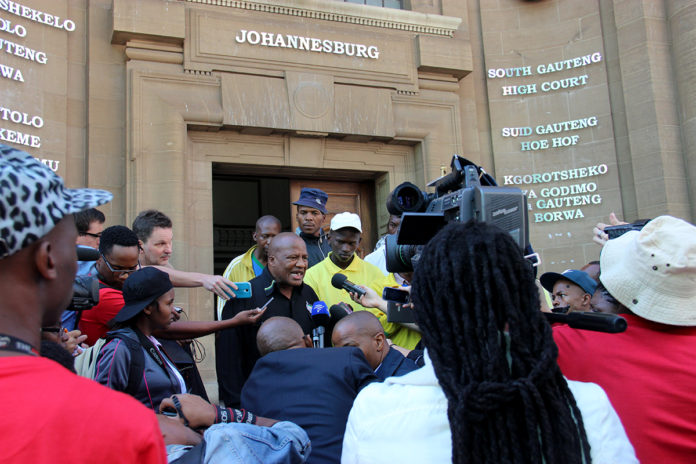By Diana Chiyangwa
Johannesburg South Africa: “Live from Diepsloot police station spreading fake news you bloody clown sellout journalist,” wrote one Twitter user in response to a Tweet by SABC’s Journalist Chriselda Lewis.
Live from diepsloot police station spreading fake news you bloody clown sell out journalist 🤡🖕
— Tyron McMotaung 𓃵 (@TMcmotaung) April 8, 2022
Since #OperationDudula was started by some female journalists covering the story, they are facing daily attacks on social media platforms.
Cyberbullying of female journalists reporting on these xenophobia attacks is increasing as they continue posting updates.
South African Broadcasting Cooperation (SABC)’s Cresilda Lewis is one example of a female journalist who is currently being bullied for her recent reporting on tensions between foreign nationals and locals.
The attacks come after she questioned the Minister of Home Affairs Mr. Aaron Moatsoaledi and Minister of Police Mr. Bheki Cele on the recent killing of Mr. Elvis Nyati, a Zimbabwean who was killed by vigilantes on 7th April 2022.
A report commissioned by UNESCO in 2021, and carried out by the International Center for Journalists surveyed more than 900 female journalists from 125 countries and found out that three-quarters of them have experienced online abuse.
The survey shows that 49% of women journalists experienced online abuse through hateful language. South Africa is among the countries in the world, where women journalists must be moved because of threats.
The survey indicates that respondents who are female journalists said perpetrators use social media platforms mostly to propagate hate towards female journalists, with Facebook leading with 77%, followed by Twitter at 74%, making these two platforms highly used and very unsafe platforms.
This is considering that only 6% of news on Twitter is related to crime and violence, like the killing Lewis was questioning, according to GMMP report, 2021.

“Who is attacking these female reporters?” The question remains a concern as many social media users use fake accounts. Another report by IWMF provides a clear examination of the professional dangers of being a female journalist in the news media today.
“We created the internet in the dying decades of the second millennium, and followed it with an even more intrusive and potentially deadly Pandora’s box: social media,” says Branko Brkic Editor in Chief of Daily Maverick, South Africa in his recent article on WAN-IFRA.
Another report by Reporters Without Borders shows 73% as the highest percentage of women who were attacked on social media platforms. The survey also reports that 22% of digital harassment leads women to withdraw from using the Internet, and in many cases, women have stopped working for some time.
Although GMMP reports indicate that, there is a 1% difference between males and females in reporting on migration, refugees, asylum seekers, ethnic conflict, integration, racism, and xenophobia, the recent attacks on Lewis who is known for her fierce reporting, suggest that male reporters don’t experience the same attacks.
GMMP reports that only 28% of female reporters in Africa cover major topics like crime and violence. In South Africa, there is an increase of 58% of female reporters compared to 48% of male reporters, however, online attacks on female reporters remain an issue.
According to Digwatch, another UNESCO study, about 75% of female journalists face online abuse, and South Africa is still one of the countries where female journalists still face online attacks.
The story was supported by Code for Africa’s WanaData initiative and the World Association for Christian Communication.














